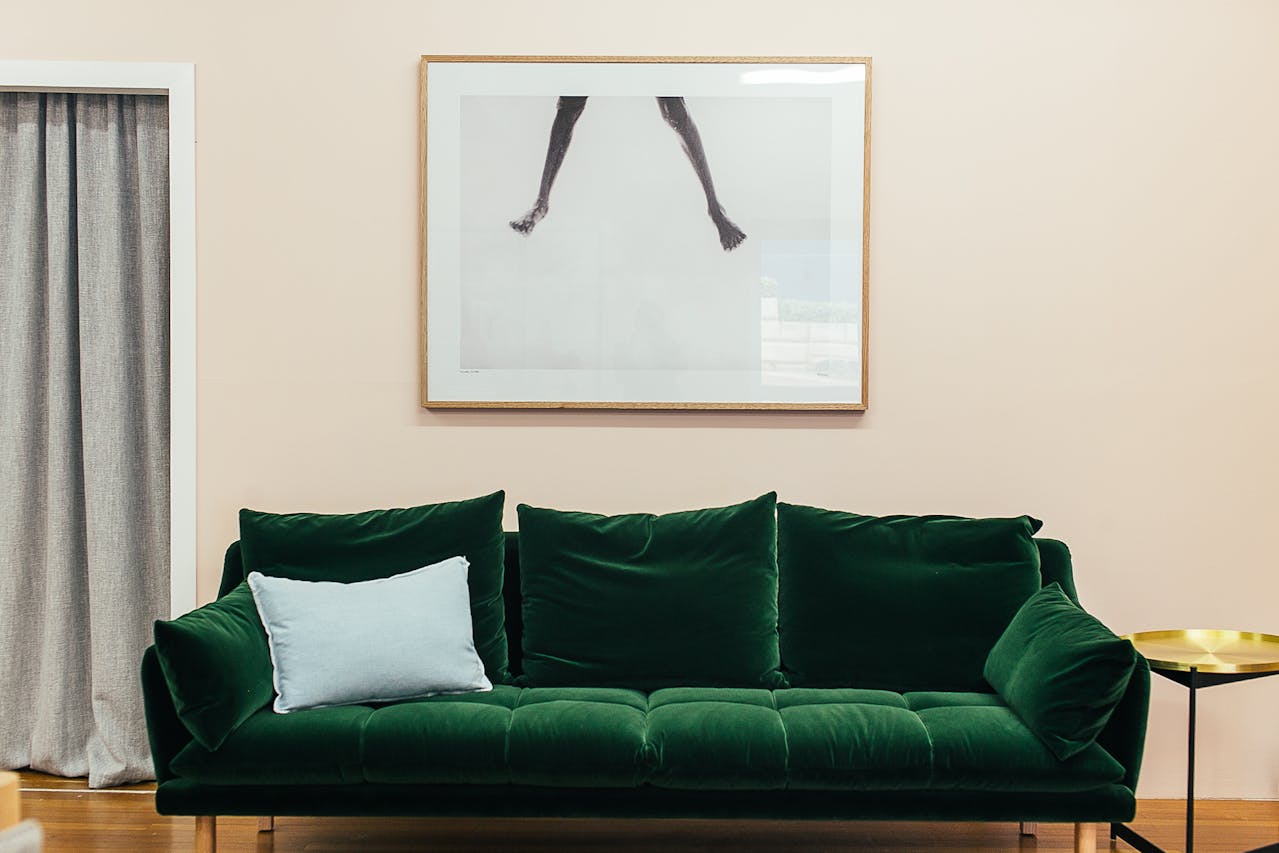A new sofa costs money. A whole new suite costs more.
But that rip looks worse than a tear in the fabric of time and space.
The Cover Up – Reupholstering Your Sofa or Chair
When you think about renovating a sofa or chair, the first thing that comes to mind is reupholstering the chair or, if the rip is on a cushion (and you can match the material) then just the cushion.
Professional upholstering can be expensive. Perhaps as much as buying a new sofa.
But if it’s a seat cushion you’re trying to cover a patterned material can really add a little life to your seat. Don’t sweat the matching material.
Reupholstering is a staple sofa project for amateur restorers too and beginners’ upholstery kits are readily available.
And it’s all in the finishing…
Using Upholstery Nails
Upholstery nails are there for both fixing and decoration. The decorative nails come in a variety of finishes, but common finishes are bronze, pewter, nickel, brass and enamel. You will also find crystal nail finishes available.
And before you start, take a look at your sofa project and check the wood and material thickness. It’s important when it comes to choosing the correct size of nail.
The length of the nail is a factor when it comes to things like pleats and piping. It stands to reason that if you have a thicker volume of material you will need a longer nail.
Also, where those parts of the sofa are under heavy use, you should consider longer nails to keep the material in place. Typically, you would use flat head nails to attach your material to the unseen parts of a sofa frame.
Decorative tacks add accents to furniture (think the studs around the arms of a Winchester Sofa). These are for indoor furniture and can be damaged by furniture polish or creams. When you’ve used flat head nails or staples in places on the sofa that can’t be hidden you would then use decorative tacks to disguise them.
In general, when thinking about which tack to use, the longer the nail the more hold it has. But you’d also need to consider the size of the wood frame you are tacking into.
Tack Types
The two basic types of tacks are Improved tacks and fine tacks. Fine tacks are smaller than improved tacks, with a smaller head and shank. You would use these for close weave fabrics. Improved tacks are larger and designed for larger weaves such as hessian or seat webbing.
Gimp pins are used where these ordinary tacks would show. They are very fine and colourful tacks.
Round Domed Nails
These are possibly the most widely recognised type of decorative upholstery nails. Upholstery nails for decoration come in a range of sizes, depending on the look or finish you want. The main measurement you see is the diameter of the head, thus a ‘14mm brass 506 nail’ will have a 14mm head diameter.
Typically, round nails come in either high domed or low domed varieties.
Square Nails
Square nails are found in a similar range of materials to round nails, but their square shape does lend itself to these being more decorative nail types.
When it comes to square nails the measurement will usually be from corner to corner.
Tacking Upholstery Nails and Studs
Let’s start by saying there are such things as stud strips available. With these you would typically nail in one in five studs, while the rest are fakes.
You’ll also need a proper stud or upholstery hammer (remember those studs aren’t the same as a regular nail. They are rounded so get some practise before approaching the real thing.
How you space them depends on how big the stud head diameter is. It’s worth measuring the length of the piece of furniture where you are placing the studs and then recreating it on a piece of cardboard.
By using a piece of cardboard as a jig you can set the studs into the right places along the furniture.
Once the studs are placed in a line and the correct distance from the edge of the cardboard (this would be the same distance of the studs from the edge of the chair you can push them into the cardboard leaving a hole.
Now slits from the edge of the cardboard to the hole, for each stud.
When you place your jig on the chair you have a template. Now push the studs back into the holes and tap them in. Thanks to the cardboard slits you can pull the cardboard out.
Finally, make any adjustments to straighten the line of studs making sure they have the same spacing between them.
Done.

